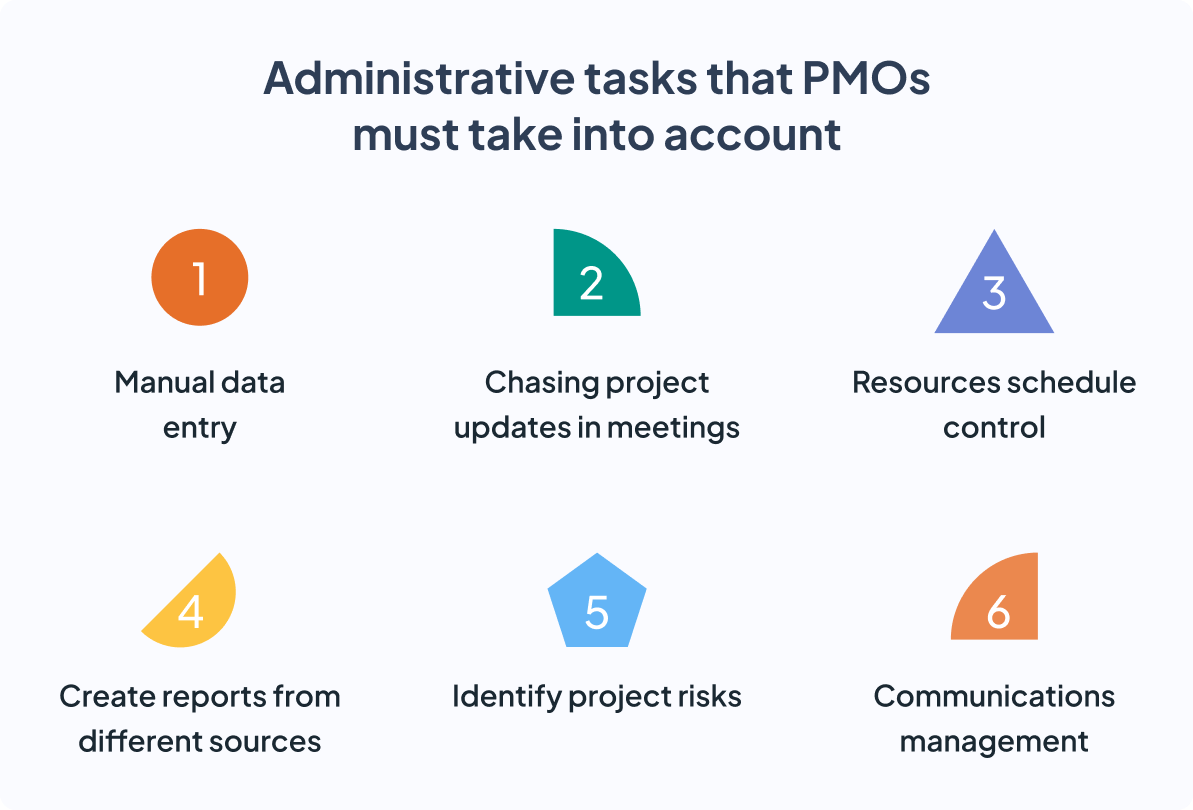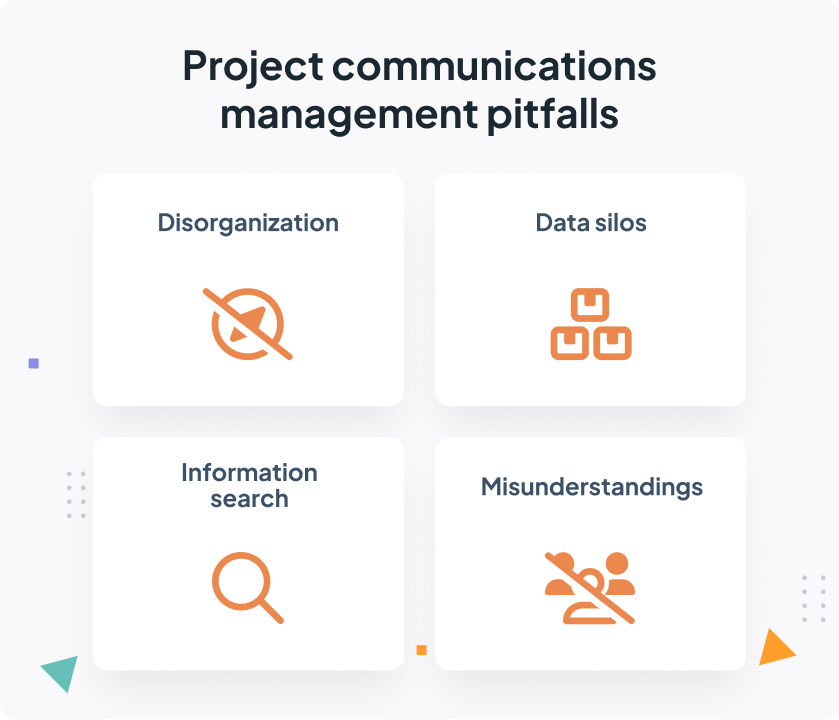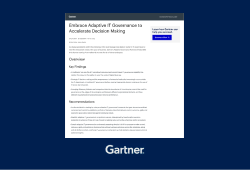6 time-consuming activities PMOs will leave behind with a PPM tool

How many hours do you spend each day on time-consuming activities that could be automated? You have no idea how much more efficient and productive your PMO could be if you didn’t have to spend so much time on this kind of chore.
Are you responsible for your organization’s PMO and want to maximize the operational efficiency of your organization? In this post you will see how a PPM software will free you from the tasks that neither you nor any project manager wants to undertake.
Maximizing productivity, the major challenge for organizations
Although most companies are taking important steps in their digital transformation, the day-to-day reality is quite different. Unproductive meetings, manual data entry in spreadsheets, never-ending email threads… Many organizations are still stuck in the same operational practices of 20 years ago, which has a very negative impact on their efficiency and productivity.
Project Management Offices are no exception to this reality either. In fact, many still use spreadsheets to manage the business’ project and product portfolios. This is incomprehensible considering the multitude of PPM tools available on the market, with which PMOs could automate most of their administrative tasks.

PROJECT PORTFOLIO MANAGEMENT
Stop wasting time, start delivering results
Learn more about Triskell’s PPM solution.
6 time-consuming activities your PMO needs to get rid of
And what are the tasks in question? These are the 6 time-consuming activities that plague the day-to-day lives of PMOs and project managers because of the sheer number of hours they spend on them.
1. Manual data entry in spreadsheets
Surely this situation sounds familiar to you. 4pm. You’re counting down the hours until the end of your workday. And you realize that you have to update 3 spreadsheets by hand, copying and pasting project data, updating project status or allocating resources. Damm it!
An unproductive task not only because of the time it takes to complete, but also because of the risks inherent in manual data entry. If you enter some of the data incorrectly, this could lead to incorrect decision-making or over- or under-allocation of resources. Does anyone still think that this task is efficient?
2. Chasing project status updates in useless meetings
Meetings – what are we going to tell you that you don’t already know? How many meetings do you attend per week to discuss updates and project status? And, most importantly, how many of them do you feel were not necessary or could have been replaced by an automated mailing or notification?
But we’re not going to lie to you. Meetings are a necessary evil in project portfolio management, so PPM software alone won’t make this task go away completely. But it will allow you to automate tasks that are normally dealt with in this type of meetings, such as project status reports or the allocation of resources and funds to projects.
3. Resources schedule control
Many PMOs have real headaches in allocating resources in a balanced way according to the requirements of each project and their level of alignment with strategic objectives. But this cannot be compared to having to manually record the hours each resource spends on projects.
Maybe you are one of the lucky ones and your organization has a solution where individual employees can report hours spent on projects. But what if you don’t? Can you imagine having to go one by one to each of the individuals and teams involved in the projects in order to record the total hours spent? If you thought that manual data entry is the most boring administrative task, you can see that this is not the case.
4. Create project reports from different sources
Put yourself in this situation. At the end of the month, you have to prepare a detailed report on the status of the project portfolios for the company’s executives. You have to collect data scattered across 10 different spreadsheets and wrestle with your Excel macros to generate graphs and dashboards that attractively and comprehensibly display metrics and KPIs that can vary drastically from one portfolio to the next.
Say goodbye to busywork and hello to strategic focus
Request a demo of Triskell and discover how it can automate time-consuming activities, improve decision making, and empower your PMO to drive success.
With so many tools available to generate reports automatically, what is the point of spending so much time on a task that can be easily automated? Moreover, what’s the point of spending hours collecting data from disparate information sources when you can have a PPM software that serves as a single source of truth for your project management processes?
5. Identifying project risks through decentralized data
Assessing project risks accurately without a PPM tool is, so to speak, mission impossible. There is a lot of data to consider in order to make a proactive and accurate risk assessment.
Cost overruns, resource shortages, changes in project scope, external factors such as socio-political or economic changes. These are just some of the factors to be taken into account. What if you had all this data scattered in different sources of information? How long would it then take you to make a minimally reliable risk analysis? And how wide would the margin of error of these estimates be?
A PPM software would provide your PMO with a structured framework with which to identify, analyze, prioritize and mitigate project risks. Your decision making in this area would be much more informed and in real time, allowing you to proactively respond to risks and ensure that projects stay on track.
EBOOK
PPM Software Buyers’ Guide
What should you look for in a new PPM tool?
6. Manage project communication via email or instant messaging applications
Project teams often communicate with the PMO through a variety of channels: email threads, instant messaging, shared documents and even face-to-face meetings.
This ‘omnichannel’ may seem convenient. But in reality this decentralized approach brings with it many pitfalls:
- Disorganization, as information is distributed through different channels.
- Data silos: relevant data may be isolated in shared mailboxes to which not all project teams have access.
- Information search: what if you need to search for a document that was shared with you several weeks ago, but you don’t remember the channel through which it was sent to you? You will have to bring out your Sherlock Holmes skills to find him, but spending 3 x more time than him.
- Misunderstandings: with communication scattered across multiple channels, important project details can easily be overlooked.
These are issues that, with a PPM software, are much more difficult to occur, since it has the necessary communication and collaboration tools so that you do not have to resort to the endless email chains that you are so fed up with.
Increase PMO Productivity with Triskell Software
Triskell Software is a PPM platform that will help you get rid of most of your time-consuming administrative tasks. In addition, it is a solution that, unlike others in the market, allows you to link each initiative of the organization with the strategic objectives. Therefore, the selection, planning and management of projects, and other areas of interest of the PMO such as Resource Management, Risk Assessment or Project Financial Management, will be directly connected to the mission and vision of the business.
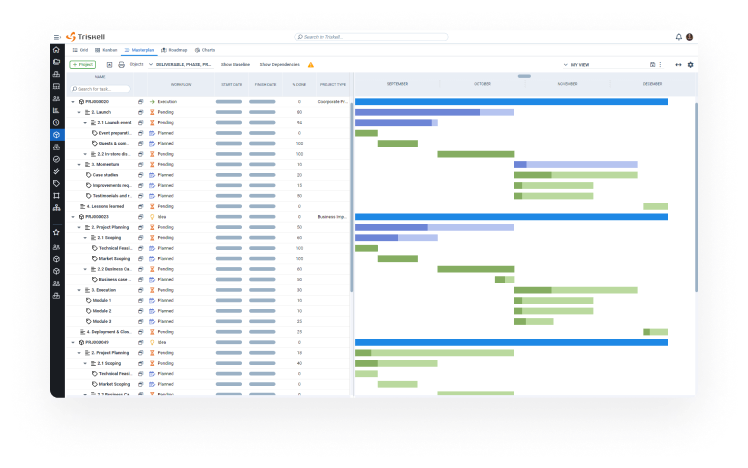
With Triskell, your Project Portfolio Management processes will improve in 4 aspects:
- Efficiency: with Triskell you will leave behind the arduous task of manually recording project data and resources in spreadsheets. You will also get real-time information on the status of each initiative, so you will be able to reduce the number of meetings with the teams that have the same purpose.
- Productivity: resource management will be more efficient, since it will be aligned with the company’s objectives. In addition, by removing many of the time-consuming tasks such as meetings or endless email chains, you will be able to focus your work on those actions and tasks that really add value.
- Collaboration and teamwork: with Triskell you will be able to centralize communications thanks to its alerts and communications system. In addition, its Kanban and Scrum boards and integration with third-party tools such as Jira, Teams or Microsoft Project will facilitate the daily operations of project teams.
- Quality of life: and, what you will surely be most grateful for in the short term, you will say goodbye to the stress and boredom of carrying out this type of administrative tasks. Forget about filling in data in Excel in a hurry before the end of your working day.
WEBINAR
Benefits of a PPM tool for the PMO
Arval Spain’s success story: from Excel to Triskell Software in just 3 weeks
The success story of Arval Spain’s PMO will surely be familiar to you. They used to have only an administrative person filling in manually all the data of the different project portfolios managed by the organization in a simple spreadsheet. That was until they implemented Triskell Software.
With Triskell, Arval Spain’s PMO has not only optimized its operations by eliminating many of the administrative tasks that used to consume most of their working day, but they now have a PPM solution that meets all their management and governance challenges.
Conclusion: say hello to productivity and leave behind time-consuming activities
As Arval Spain’s PMO and all project management offices are well aware, time is a precious commodity. Every minute wasted in time-consuming activities is a lost opportunity in the pursuit of excellence. Triskell Software is the solution you need to leave behind manual data entry, endless meetings and headaches in risk analysis and assessment.
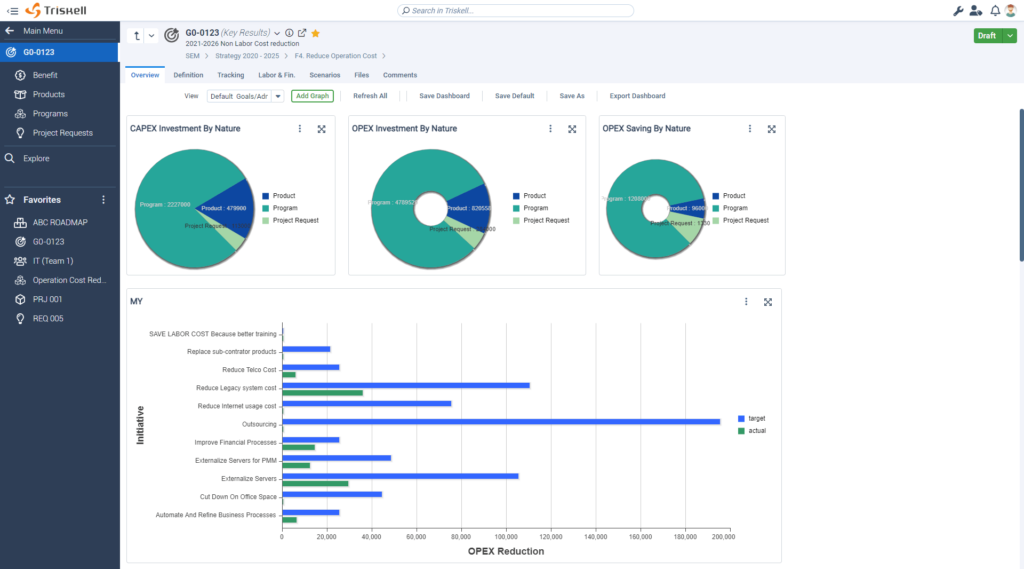
By automating tasks, centralizing information and improving collaboration, Triskell enables PMOs and project, program and portfolio managers to work more efficiently. It’s time to say goodbye to time-consuming tasks and embrace a future of streamlined efficiency, increased productivity and reduced stress.
SUBSCRIBE TO OUR NEWSLETTER
Get stories like this in your inbox
Request a demo of Triskell Software
Triskell meets all the requirements for your organization’s PMO to take a step forward in aligning your project portfolio with strategic planning.
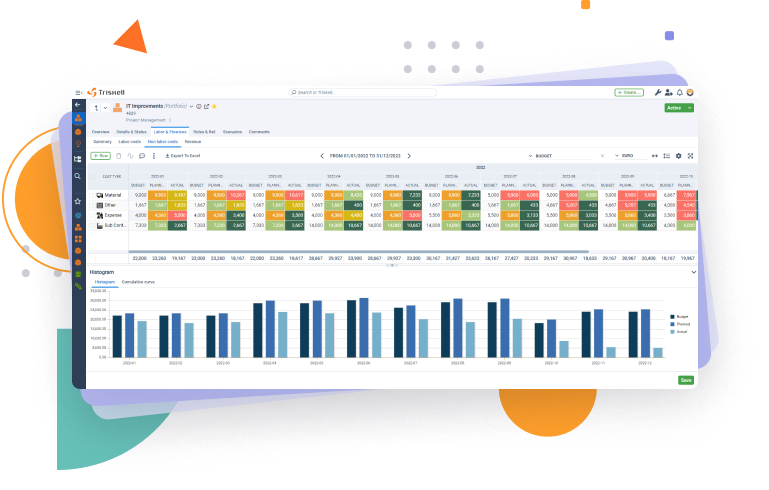
FAQs about time-consuming PMO activities
How can PMOs automate resource scheduling?
Project portfolio management (PPM) tools offer features to automate resource scheduling. These tools can:
- Track resource skills and availability: Store information on team member expertise and workload, allowing for assigning tasks based on suitability and capacity.
- Visually manage resource allocation: Use drag-and-drop functionality or calendars to schedule tasks and visualize potential conflicts or overallocations.
- Set up automated notifications: Alert team members about assigned tasks and potential schedule changes, promoting transparency and reducing manual communication.
- Leverage real-time data: Update resource availability as projects progress, ensuring schedules reflect current workloads.
Are there any drawbacks to automating PMO activities?
While automation offers numerous benefits, there are a few potential drawbacks to consider:
- Initial investment: Implementing PPM tools might require an upfront cost for software licenses and potentially training for team members.
- Learning curve: Adapting to new software and processes can take time, impacting efficiency in the short term.
- Data quality: Automation relies on accurate data. PMOs need to ensure consistent data entry to avoid generating misleading reports or schedules.
- Limited flexibility: Automation may not be suitable for all tasks, especially those requiring complex decision-making or creative problem-solving.
How can PMOs measure the success of automating time-consuming activities?
Tracking key metrics can demonstrate the positive impact of automating PMO activities. Here are some examples:
- Time saved: Compare the time spent on manual tasks before and after automation to quantify efficiency gains.
- Project completion time: Monitor if projects are delivered faster after implementing automation tools. This could indicate improved resource allocation and task execution.
- Team productivity: Track metrics like the number of tasks completed per unit time to assess if automation has freed up team members to focus on higher-value activities.
- Resource utilization: Analyze data to see if team members are consistently working on tasks that align with their skills and capacity. Effective automation should optimize resource utilization.
By monitoring these metrics, PMOs can demonstrate the return on investment (ROI) from automating time-consuming activities and justify further investment in automation solutions.
Related Content

ESG principles, frameworks and best practices for Project Management
Align projects with ESG principles. Learn how companies use frameworks like GRI & SASB to meet sustainability goals and improve compliance.

10 types of Project Management Offices (PMO): structure, purpose and how to choose the right one
Learn about different PMO types, their governance levels, and which one is the best fit for your company’s project management needs.

How to create a project budget: methods and techniques for effective project budgeting
Learn how to create a project budget with this detailed guide. Discover essential methods and techniques for effective project budgeting in PPM.
